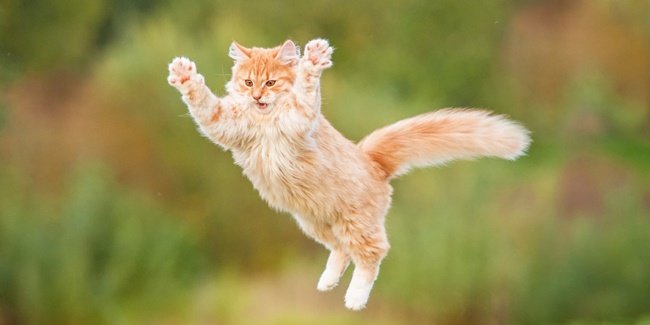Answering 6 Important Questions About Cats
CATS – Researchers have attempted to delve into the root of these perplexing actions. Now, let’s examine their discoveries.
Cats exhibit peculiar behaviors that are difficult to explain straightforwardly. Despite being provided with fresh water in their own designated bowls, these feline friends seem drawn to drinking from running faucets.
Even when indulging in pricey toys, they often show a preference for the cardboard boxes the toys were packaged in. The scientific community has attempted to decipher the root of these perplexing habits.

Why Do Cats Purr?
Purring remains a unique trait among various cat species in the Felinae subfamily, encompassing both domestic and wild cats. The structure of the hyoid bone in the throat, fixed in some species and flexible in others, points towards a potential link to purring. Yet, the precise mechanism driving this behavior continues to spark debate among experts. Some theories propose that the rapid manipulation of laryngeal muscles around the vocal cords produces the purring sound.
Why Does Catnip Make Cats High?
Roughly 70% of cats are susceptible to the euphoric effects of nepetalactone, the active compound in catnip. Inhalation of this volatile organic molecule triggers a series of neurological reactions, including stimulating the olfactory bulb, amygdala, and hypothalamus, resulting in temporary exhilaration. The subsequent effects of catnip usually diminish within 10 to 15 minutes, leaving cats in a notably relaxed state.
Why Do Cats Love Boxes?
Cats’ affinity for enclosures extends beyond mere boxes, as they readily explore suitcases, storage bins, and even painted shapes on the floor. This inclination toward hiding is an instinctual behavior, providing them with a secure spot to observe their surroundings and rest. Some researchers have even contemplated the idea of cats behaving like liquids due to their adaptability to fit into cramped spaces.
Why Do Cats Knead?
Kneading, commonly observed in nursing kittens, serves the purpose of stimulating milk flow. However, this behavior persists into adulthood, often seen when cats are at ease or displaying affection. Veterinarians propose that kneading acts as a stress-relieving mechanism for cats and can also serve as a form of territorial marking.
Why Do Cats Drink Out of Faucets When Their Water Bowl Is Right There?
Despite owners’ efforts to provide clean water, cats frequently display a preference for drinking from faucets. This conduct might be rooted in their ancestors’ desert-dwelling past, leading them to perceive stagnant water as potentially unsafe. The attraction to running water might indicate a fresher water source, and the sound and movement of a dripping faucet could catch their interest. Alternatively, individual taste preferences or disapproval of the provided water bowl may influence this behavior.
Why Do Cats Typically Land on Their Feet?
Author Gregory J. Gbur outlines in his work Falling Felines and Fundamental Physics that a falling cat manages to land on its feet by employing a combination of four distinct movements. These movements involve rotating the body, adjusting momentum, counter-rotating body sections, and tail manipulation. Termed the “cat righting reflex,” this instinctual behavior allows cats to often land upright, although it doesn’t guarantee a perfect landing every time.

